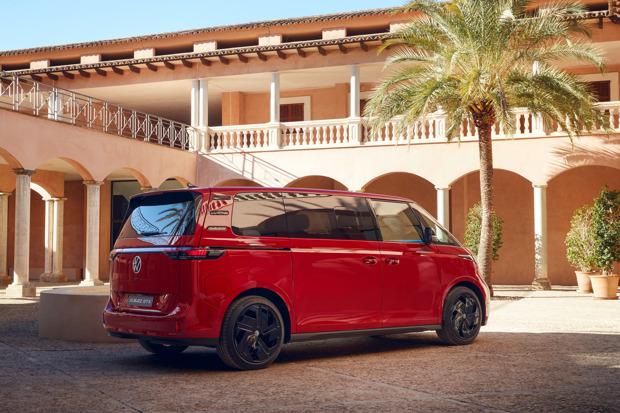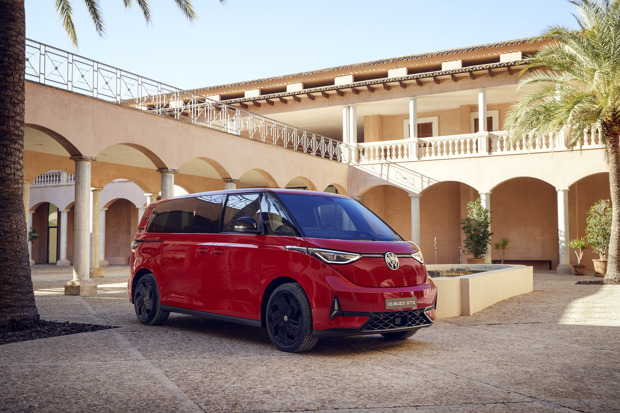High-performance ID.Buzz to lead Volkswagen’s van offensive
A new ‘hot’ version of the electric Volkswagen ID.Buzz is to join the company’s line-up, with panel van, passenger and camper versions all part of the expanded line-up.
The new VW ID.Buzz GTX uses twin electric motors to deliver 340PS to the retro-styled battery-powered model, which comes in short and long wheelbase variants and has either a 79kWh or 86kWh battery, depending on length.
Its power output is enough to accelerate the Volkswagen ID.Buzz from 0-62mph in just 6.5 seconds, while it also gets black alloy wheels and sportier styling.
No range figures have been published as yet, but it is expected to be significantly greater than 200 miles per charge, while onboard fast-charging means it’ll take a 10% to 80% charge in 26 minutes.
The increase in power also means a boost to the model’s towing weight – ideal for camper van buyers – which will increase from 800kg to 1800kg, making it possible to tow a small car.
Inside, it gets new trim and GTX-specific seats along with a new 12.9-inch touchscreen, with illuminated touch panel sliders and voice assistant.
The newcomer will go on sale later this year in five, six, or seven-seat configurations, with further versions to follow.

Ask HJ
How do I change the classification of my converted van to a campervan?
I have recently had my Renault Trafic van converted into a campervan by a company specialising in such conversions. My questions relate to maximum speeds, what needs to be done notifying the DVLA and does it now change from PSV to MoT?
First and foremost, you need to let the DVLA know your vehicle is no longer a van. You can do this by changing the vehicle type on the V5C registration document to "Motor Caravan" and including a list of what has been done to convert it. Its quite easy if your converted van meets the requirement of the DVLA.
For a vehicle to be recognised as being converted to a motor caravan it must meet four categories. For the DVLA to change the body type, the vehicle must have the external permanent features described in the DVLA guidance for converting a vehicle into a motor caravan. “Motor Caravan” means a special purposes passenger car constructed to include living accommodation which contains at least the following equipment: Seats and table, sleeping accommodation (which may be converted from the seats), cooking facilities and storage facilities. The equipment must be rigidly fixed to the living compartment. However, the table may be designed to be easily removable. As it is no longer a goods vehicle it will qualify for Class 4 MoTs. However, as it is derived from a van you must adhere to van speed limits and these do not change accordingly. The DVLA may request to inspect the vehicle before allowing a change of body type.
Answered by Craig Cheetham
More Questions



